Following their Aug. 7, 1971 splashdown in the Pacific Ocean that concluded their 12-day Moon landing mission, Apollo 15 astronauts David R. Scott, Alfred M. Worden and James B. Irwin began their journey back to their homes in Houston. After spending one night aboard the prime recovery ship U.S.S. Okinawa and a brief stop in Honolulu, they boarded a jet bound for Houston where they reunited with their families. Not subject to the postflight quarantine of previous Moon landing crews, they returned to work the next day. The lunar samples they collected returned via separate jets to Houston while their Command Module Endeavour sailed back to California aboard the Okinawa, eventually returning to its factory of origin for detailed postflight analysis.
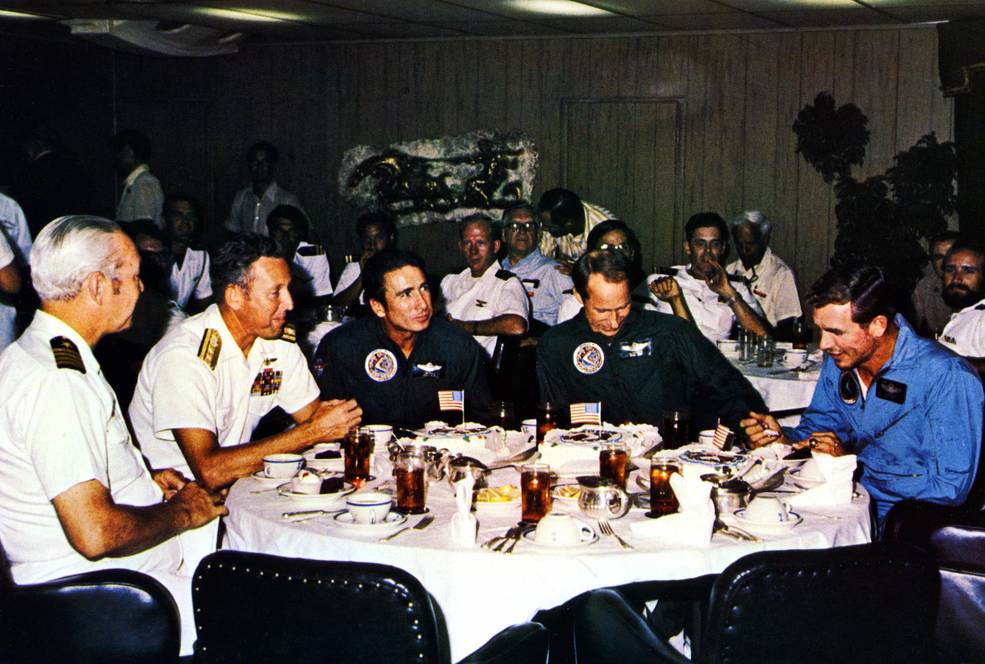
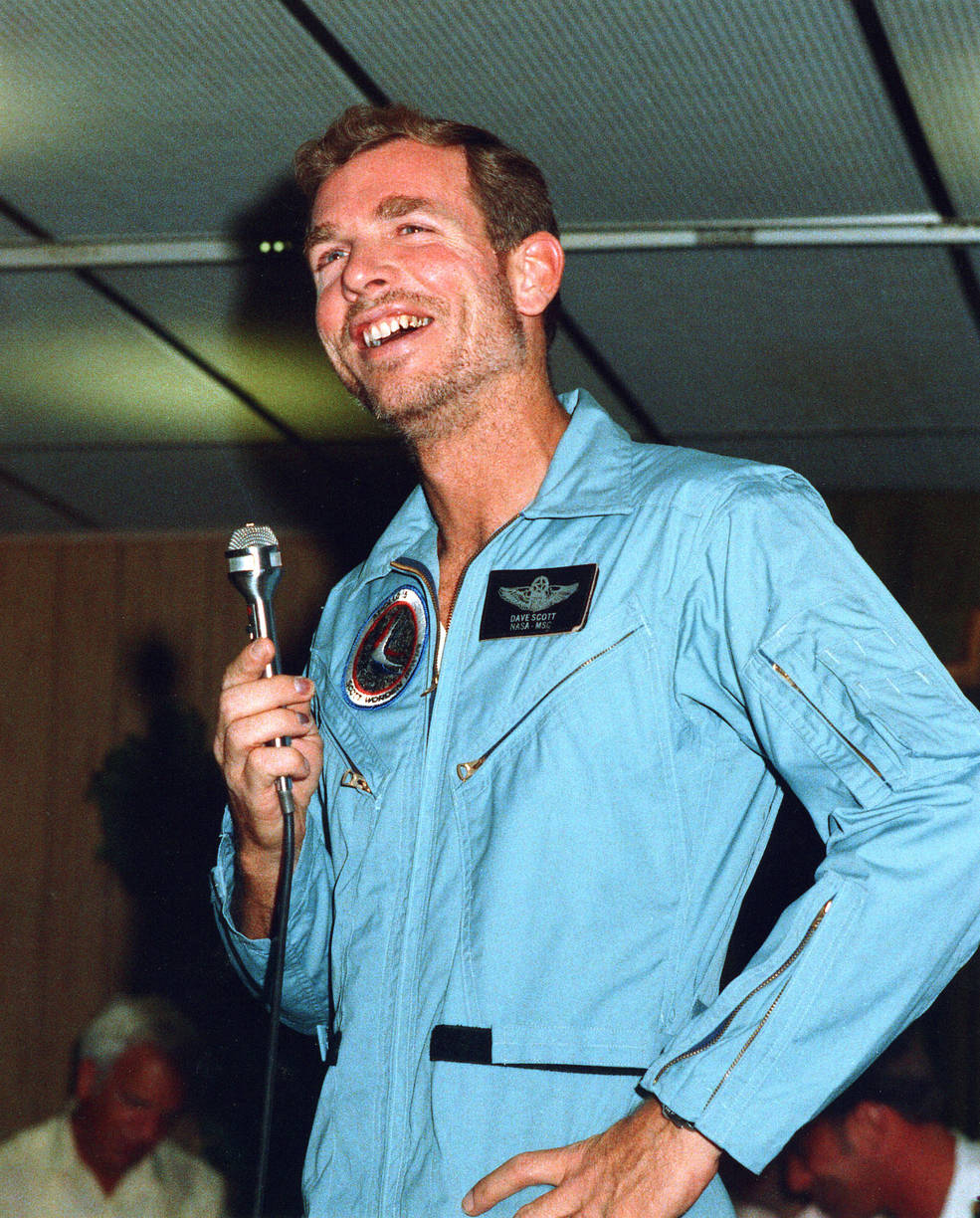
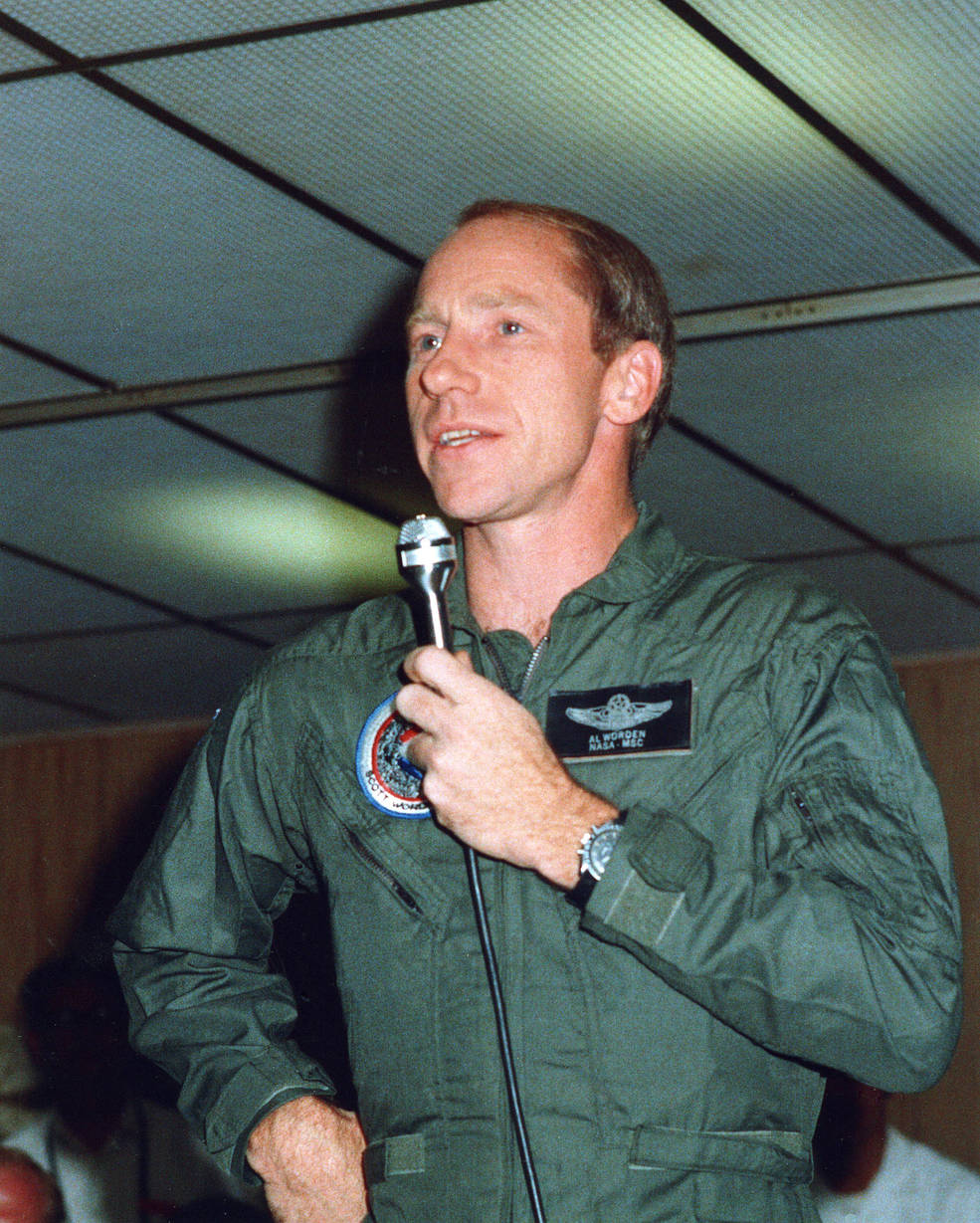
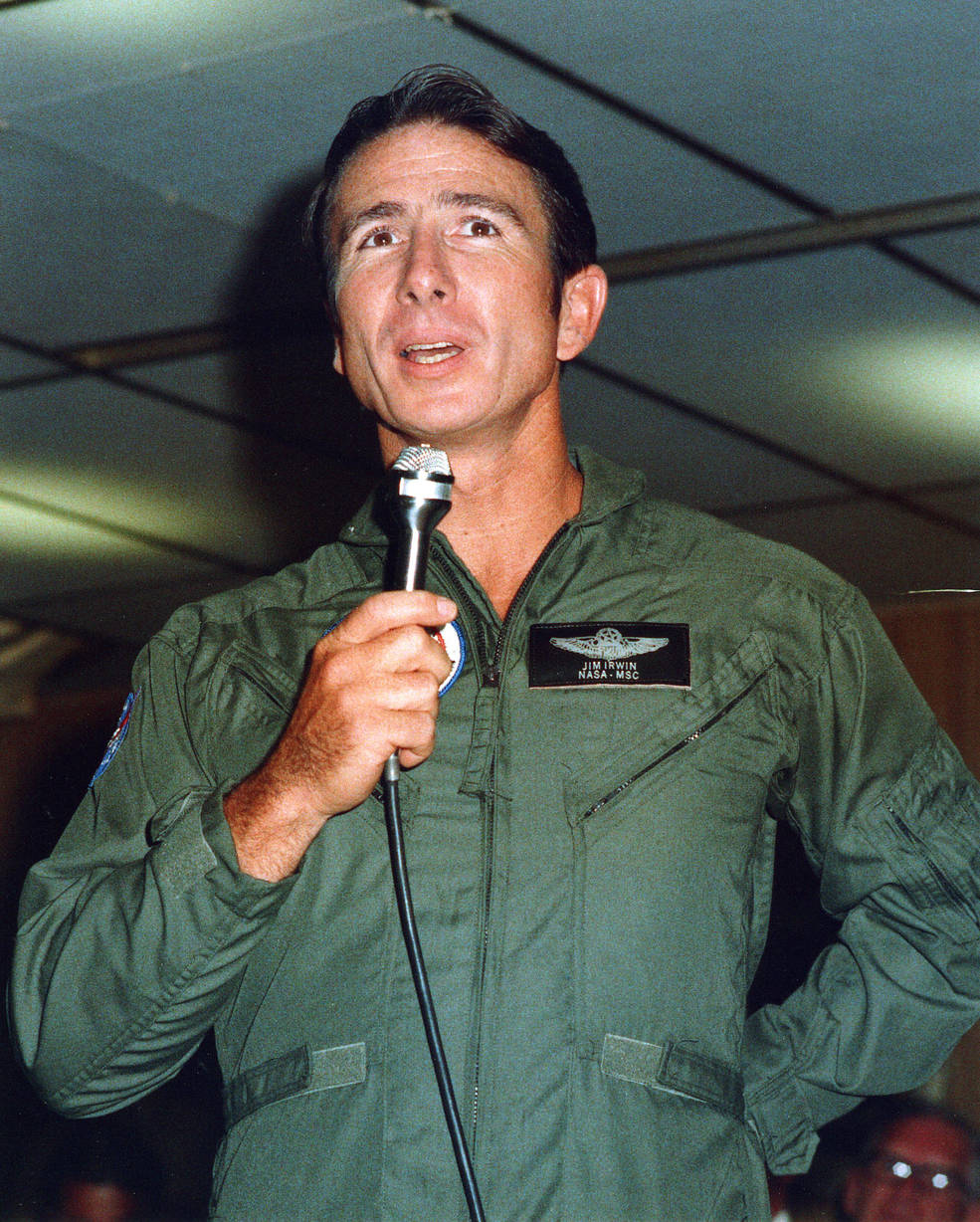
Left: Captain Andrew F. Huff, commanding officer of the prime recovery ship U.S.S. Okinawa, left, Rear Admiral Thomas B. Hayward, Commander of Task Force 130, Pacific Recovery Area, and Apollo 15 astronauts James B. Irwin, Alfred M. Worden, and David R. Scott at the welcome dinner aboard the U.S.S. Okinawa. Middle left: Scott thanking the crew of Okinawa for the recovery. Middle right: Worden addressing the officers and crew of Okinawa. Right: Irwin adding his words of thanks.
Apollo 15 splashed down 330 miles north of Honolulu, ending the longest Moon landing mission up to that time. Since NASA ended the policy of postflight quarantine, Scott, Worden, and Irwin were warmly greeted by NASA, U.S. Navy, and U.S. Air Force officials as they stepped off the recovery helicopter onto the deck of Okinawa. Following the topside festivities, Scott, Worden, and Irwin received thorough physical examinations from flight surgeons in Okinawa’s medical facilities. President Richard M. Nixon telephoned them with his congratulations and invited them and their wives (Worden was actually single) to dinner at the White House. They took their first shower in 12 days, ate their first non-space meal at the captain’s table, each astronaut thanking the ship’s crew for the efficient recovery, and spent their first night back on Earth aboard Okinawa.
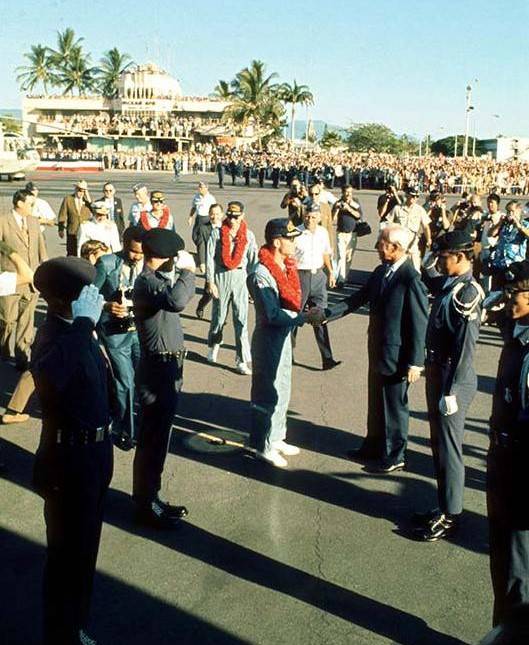
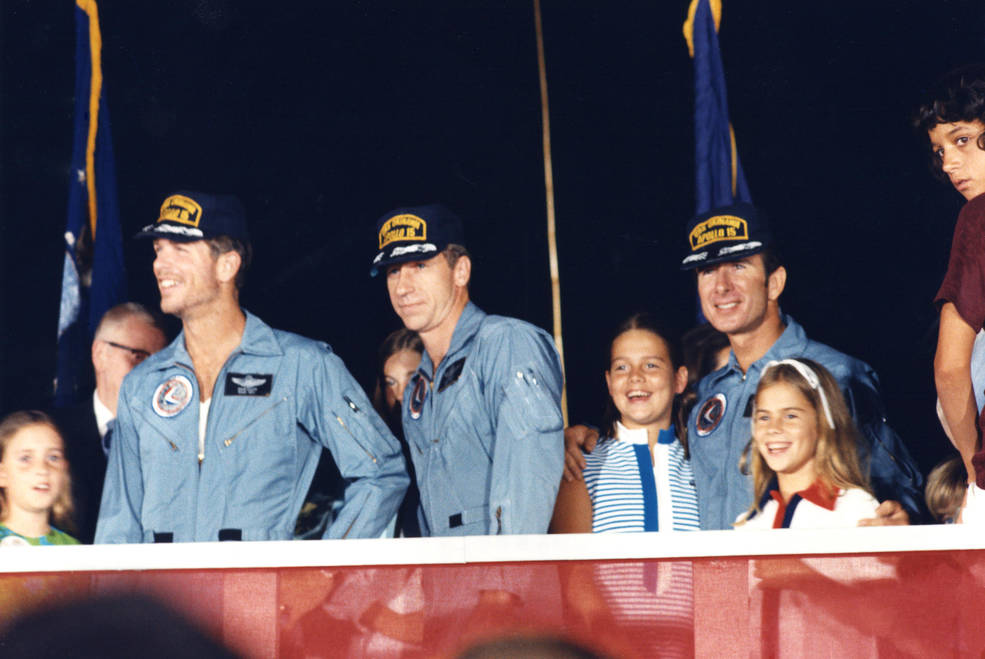
Left: Hawaii Gov. John A. Burns says farewell to the Apollo 15 crew (wearing red leis) as they board a C-141 jet at Hickam Air Force Base (AFB) in Honolulu for their flight back to Houston. Credit: Image courtesy Edward Nevels. Right: Apollo 15 astronauts David R. Scott, left, Alfred M. Worden, and James B. Irwin surrounded by family members during the welcome home reception at Ellington AFB in Houston.
By the next morning, the ship had arrived in Honolulu and the astronauts flew by helicopter to nearby Hickam Air Force Base (AFB), where Hawaii Governor John A. Burns and other local dignitaries, as well as a large and enthusiastic crowd, greeted them. Then they boarded a C-141 jet for the eight-hour flight back to Houston’s Ellington AFB where they reunited with their families. A large crowd of well-wishers, NASA personnel, and city of Houston officials greeted them despite the drizzly Sunday evening. Each astronaut spoke a few words about their recent mission. After the ceremony, each astronaut with his family was driven home in chauffeured government vehicles. By the next morning, the astronauts were back at work at the Manned Spacecraft Center (MSC), now NASA’s Johnson Space Center in Houston, for further medical examinations and to begin a lengthy series of debriefings to describe in detail all aspects of their mission. On Aug. 12, Scott, Worden, and Irwin held a press conference in MSC’s main auditorium. In addition to describing their mission and answering reporters’ questions, Scott revealed for the first time that at the conclusion of the final surface excursion, he had placed on the lunar surface a plaque bearing the names of 14 astronauts and cosmonauts lost in the line of duty as well as a statuette created by Belgian artist Paul Van Hoeydonck representing a fallen astronaut. Scott concluded the press conference with a quote from the Greek philosopher and historian Plutarch that he felt fitting to describe their recently completed mission: “The mind is not a vessel to be filled, but a fire to be lighted.”
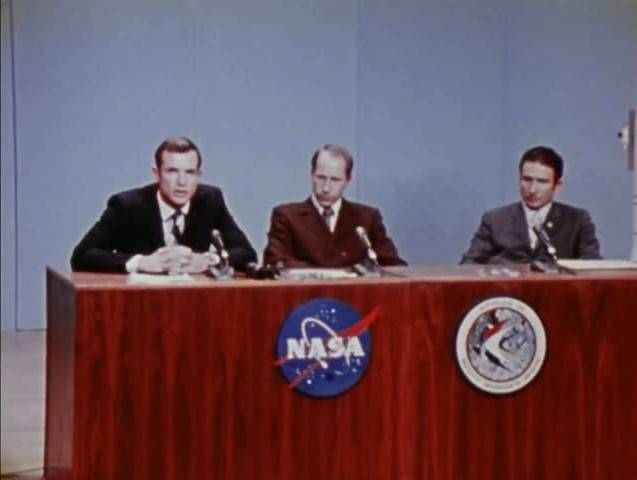
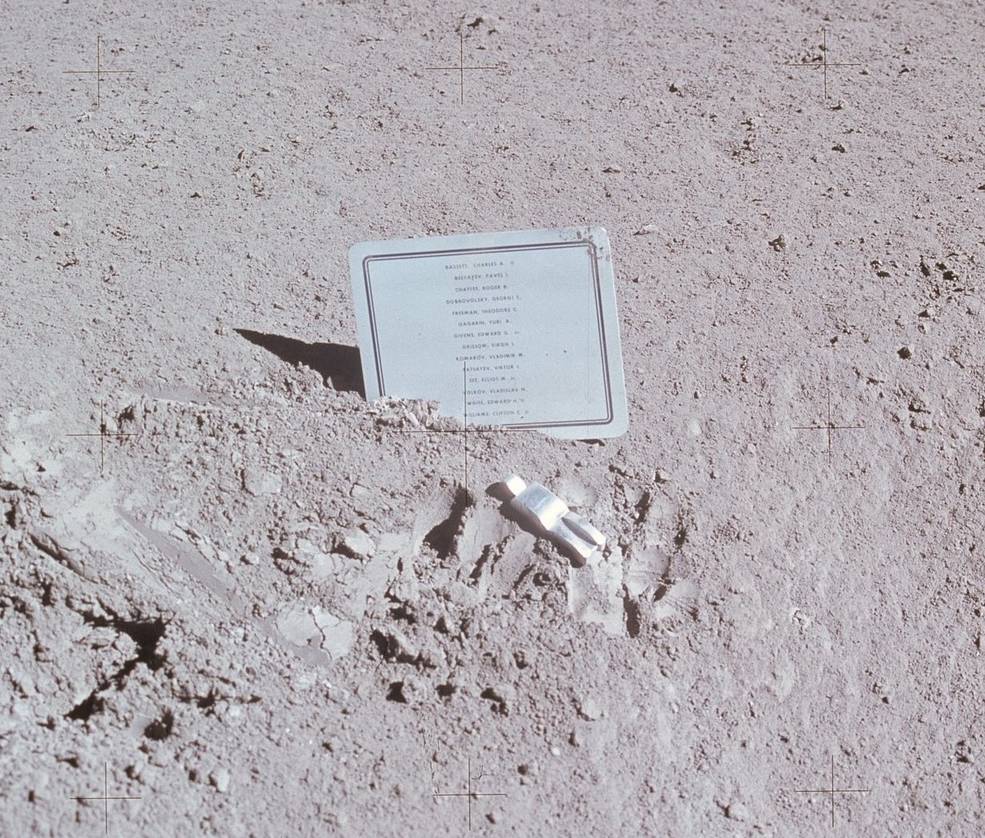
Left: Apollo 15 astronauts David R. Scott, left, Alfred M. Worden, and James B. Irwin during the postflight crew press conference. Right: Image of the plaque and statuette left on the Moon to commemorate fallen astronauts and cosmonauts.
The first plane carrying about half of the 170 pounds of lunar samples as well as film and biological samples from the mission left the U.S.S. Okinawa about five hours after splashdown and arrived at Hickam AFB two hours later. The samples and film were transferred to a cargo jet and arrived at Ellington AFB near MSC on Aug. 8, about 13 hours before the astronauts. A second load of samples and film arrived a few hours after the first. Scientists at MSC’s Lunar Receiving Laboratory began documenting and examining some of the samples almost immediately. Of particular interest was a rock dubbed “Great Scott,” at 21 pounds the heaviest single sample returned from the Moon up to that time. Scientists later cut the large rock into smaller fragments and loaned several pieces to museums around the world. Another interesting sample was the so-called “Genesis Rock,” a white anorthosite so named because it was thought to be among the oldest samples returned. A sample of green tinted soil also intrigued scientists. A few days after their return to Houston, Scott and Irwin had their first look at the samples they returned, having last seen them on the surface of the Moon.
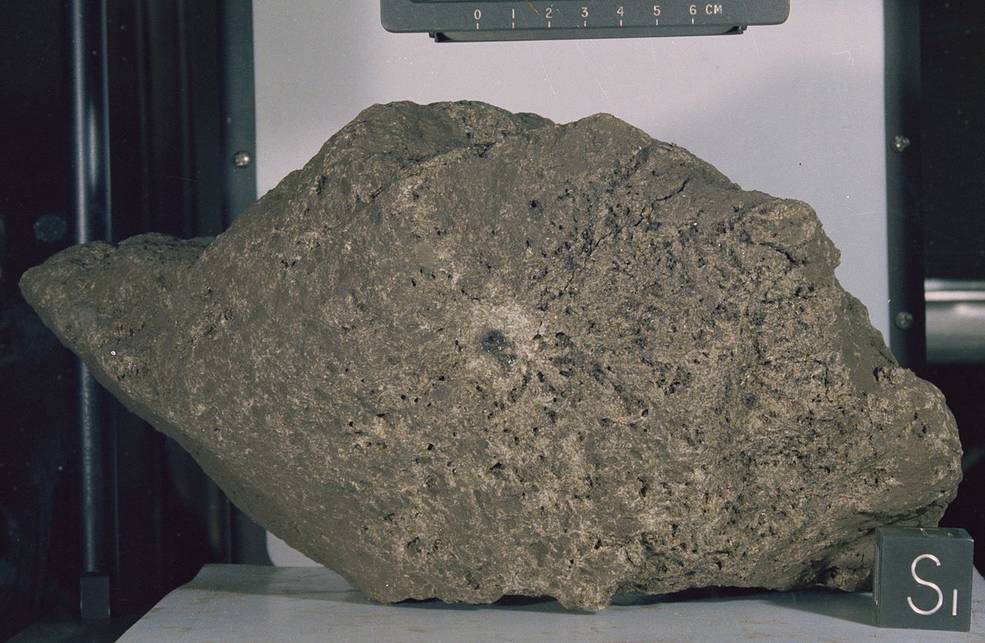
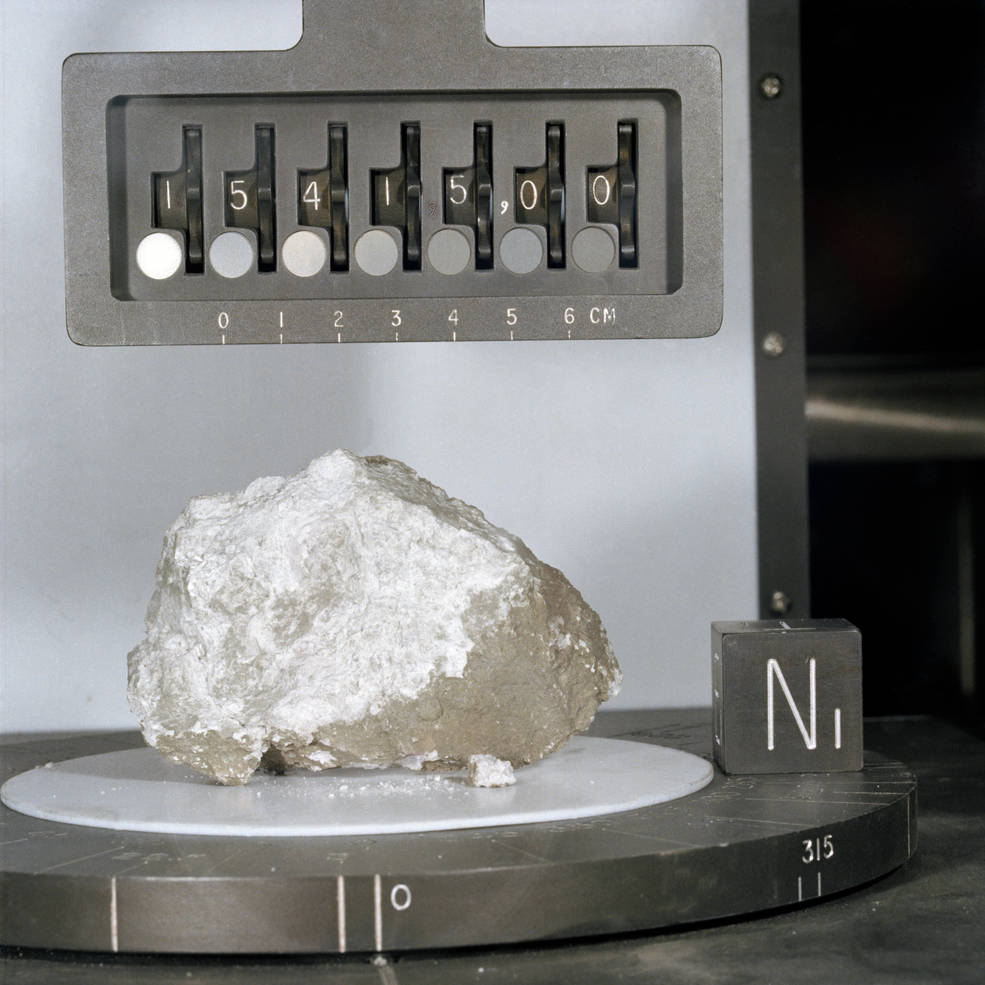
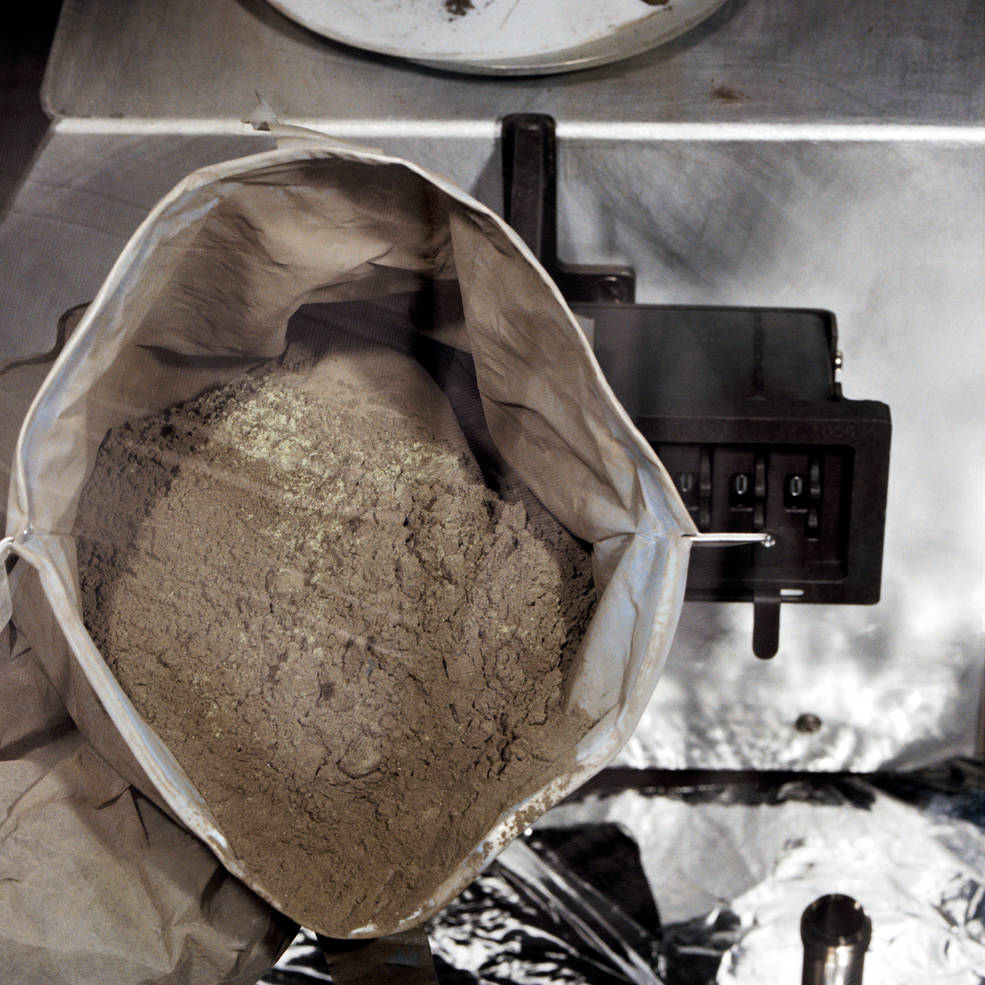
Several Apollo 15 rock and soil samples. Left: The rock dubbed “Great Scott,” at 21 pounds the largest sample returned from the Moon up to that time, collected on the rim of Hadley Rille during the third lunar surface excursion. Middle: The white anorthositic rock dubbed the “Genesis Rock” collected during the second excursion. Right: A container of green-colored lunar soil collected during the second surface excursion.
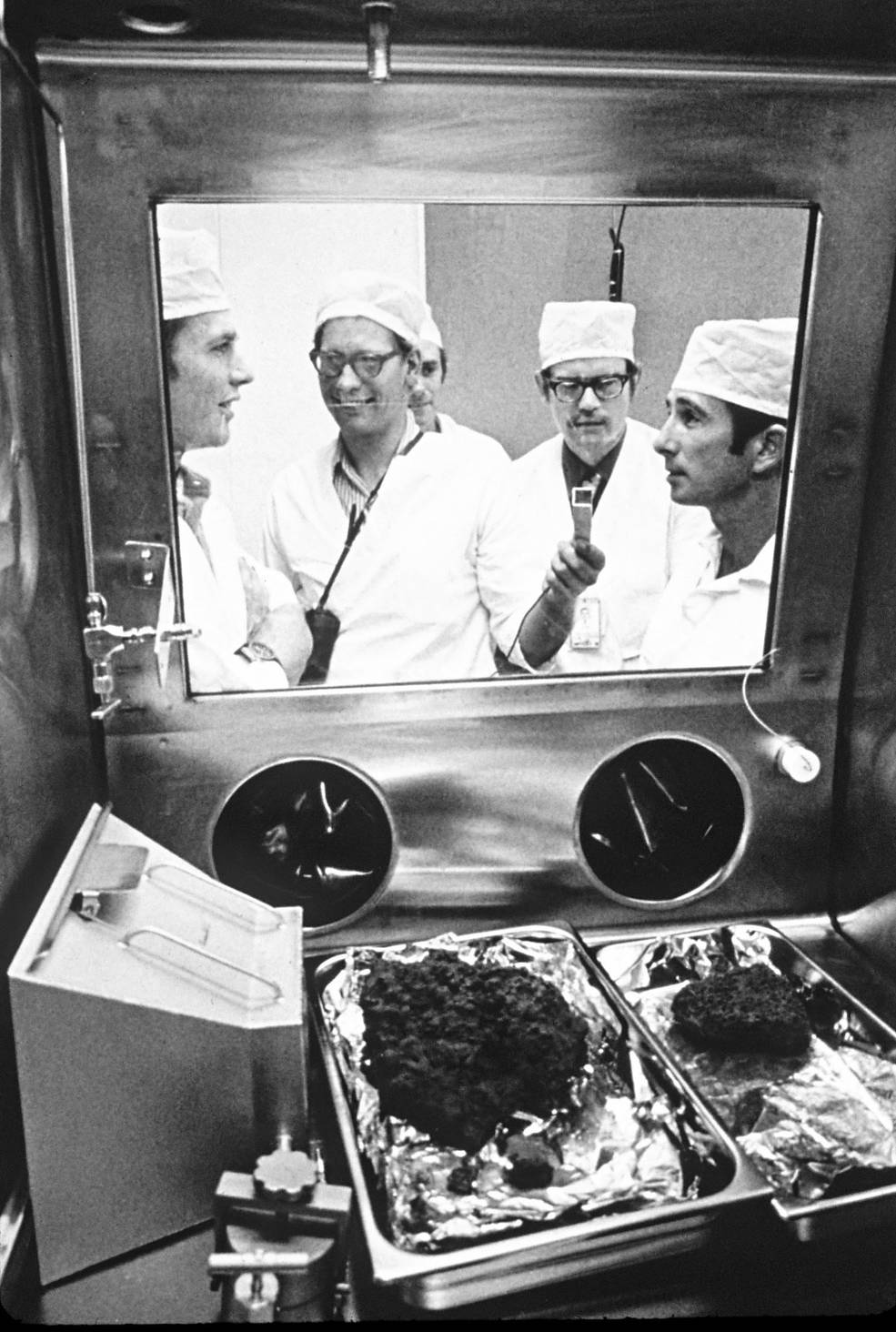
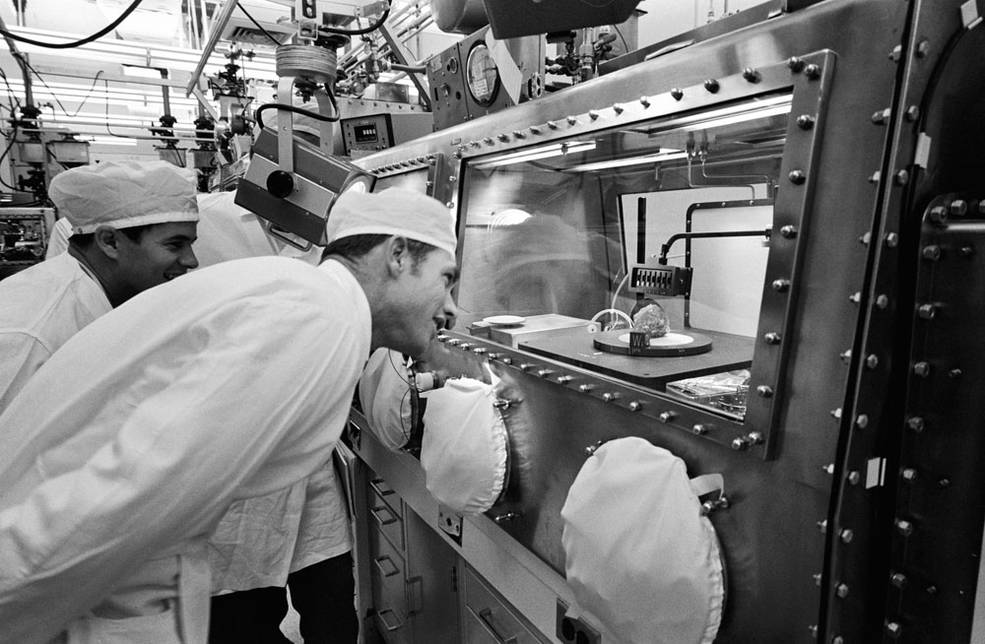
Left: In the Lunar Receiving Laboratory at the Manned Spacecraft Center, now NASA’s Johnson Space Center in Houston, Apollo 15 astronauts David R. Scott, left, and James B. Irwin, right, get their first look at some of the Moon rocks they brought back, accompanied by geologists Gary E. Lofgren, William C. Phinney, partially obscured, and James W. Head. Right: Scott examines the rock dubbed the “Genesis Rock,” as astronaut Joseph P. Allen, who served as capsule communicator during the lunar surface spacewalks, looks on.
Following splashdown, the recovery team brought the CM Endeavour aboard the U.S.S. Okinawa where NASA officials began unloading some of its contents, such as the lunar samples, film, and crew biological samples. Endeavour stayed aboard Okinawa as she made a brief port stop in Honolulu and then sailed to San Diego, arriving at North Island Naval Air Station on Aug. 16. Sailors offloaded Endeavour and in a portside hangar technicians safed the spacecraft from pyrotechnic devices and drained all the propellant lines of remaining hazardous fuels. Endeavour departed by truck for its place of manufacture, the North American Rockwell plant in Downey, California, on Aug. 20, where engineers thoroughly inspected the spacecraft.
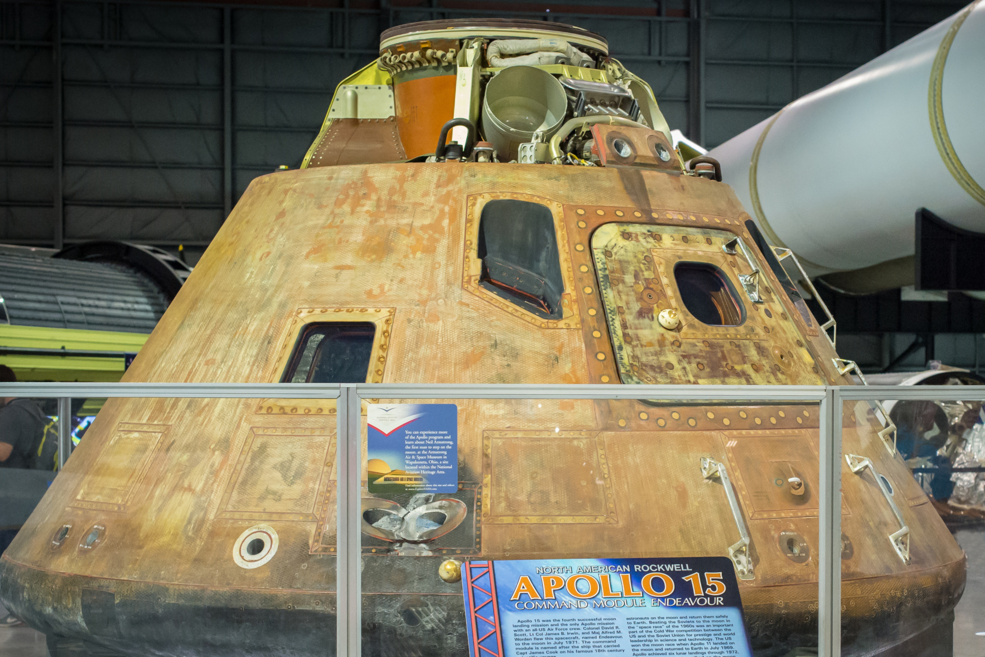
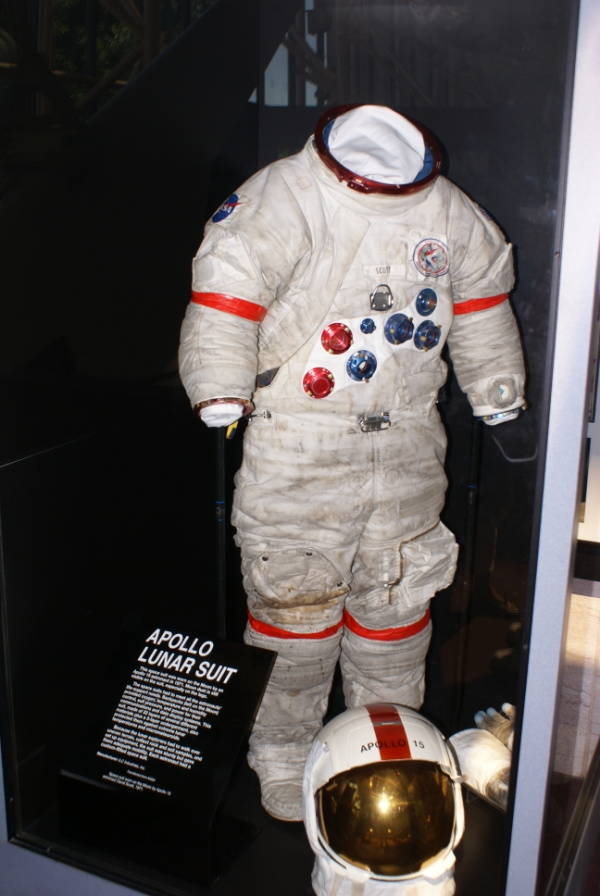
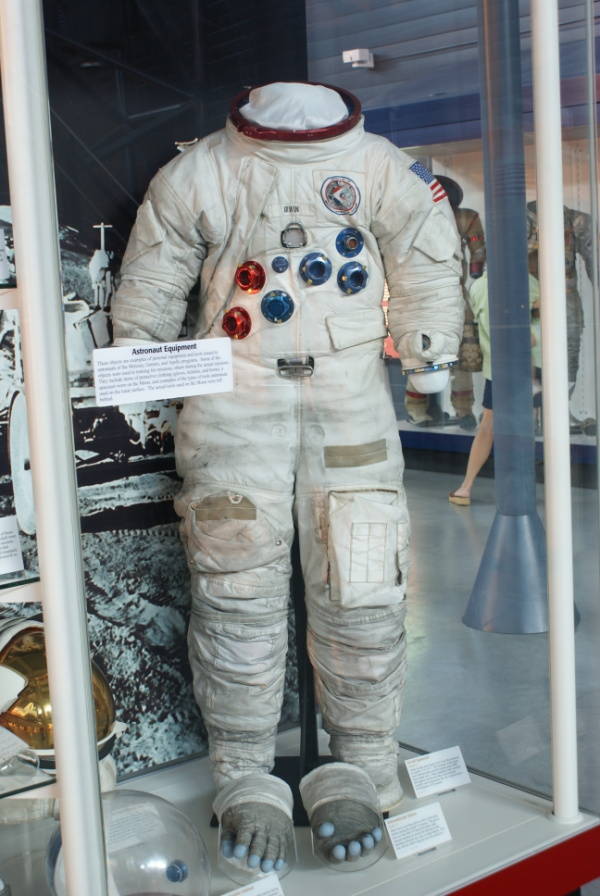
Left: The Apollo 15 Command Module Endeavour on display at the National Museum of the United States Air Force at Wright-Patterson AFB in Ohio. Credit: Image courtesy National Museum of the United States Air Force. Middle: Apollo 15 astronaut David R. Scott’s spacesuit on display at the Smithsonian Institution’s National Air and Space Museum in Washington, D.C. Credit: Image courtesy heroicrelics.org. Right: Apollo 15 astronaut James B. Irwin’s spacesuit on display at the Smithsonian Institution’s National Air and Space Museum’s Stephen F. Udvar-Hazy Center in Chantilly, Virginia. Credit: Image courtesy heroicrelics.org.
To be continued…
John Uri
NASA Johnson Space Center


























